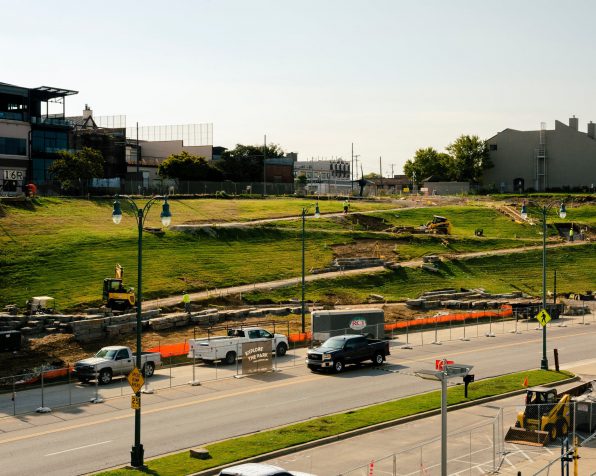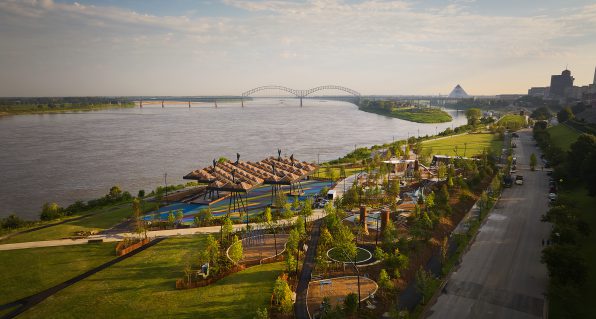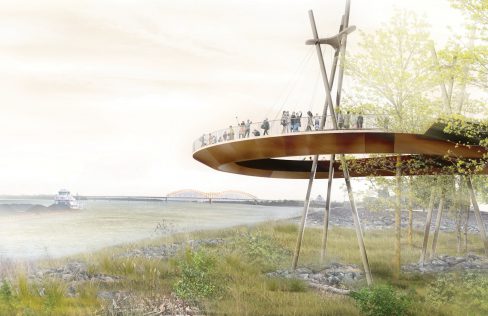New York Times — "Will World-Class Architecture Bring Civic Pride Back to Memphis?"
‘At Tom Lee Park, a short walk from the site where the new Brooks is scheduled to open in 2026, Gang, who is Chicago-based, is overseeing the redesign in collaboration with Kate Orff of SCAPE in New York. Both Gang and Orff expressed enthusiasm about reorienting the city to the river, which was long viewed as a place for commercial, not recreational, activities. “It was exciting to think about reconnecting with it and making it accessible to all,” Gang said.
Striding vigorously down a new winding path there, compliant with the Americans With Disabilities Act, from the light-rail line on the bluff to the river 30 feet below, Gang said, “What does accessibility to all mean? Not just physical accessibility. It is so that people view it as their waterfront, too. How can they be made to feel welcome?”
. . . . Orff’s landscape team will plant trees to bring shady relief and add contoured hills. A major part of the budget will go to soil remediation. “Tom Lee is a place that is so exposed and windswept and hot and sunny, if you’re there on a July day, you are there for five minutes and then you are running for shade,” Orff said.’
Construction of Cutbank Bluff at Tom Lee Park, which was designed by SCAPE to create a newly-accessible walking path from the city down to the park.
Related
Memphis Flyer — "Take Me to the River"
Tom Lee Park Engagement Center opens at Beale Street Landing to share Studio Gang design with Memphians.
Los Angeles Times — "6 Ideas for New Monuments — in Honor of Migration, a Massacre and a Tree"
Jeanne Gang speaks to Los Angeles Times writer Carolina A. Miranda about how a monument to Chicago’s labor history could reveal and memorialize an important history tied to the city’s architecture.
Children and Nature Network — "New Tom Lee Park Will Be a Nature Game Changer for Memphis Neighborhood"
“Memphis is the nation’s second poorest large city, and its poorest zip code — 38126 — sits next to Tom Lee Park. Sixty-one percent of the people who live in that mostly-Black zip code are poor, and the median age is 24. In the other surrounding zip codes, 33 percent of the people who live there are poor.
In those neighborhoods, community centers and parks exist, but they tend to be places structured around sports and planned activities and not nature. Like most communities inhabited by people of color, green spaces are rare – and nature parks are rarer.”



